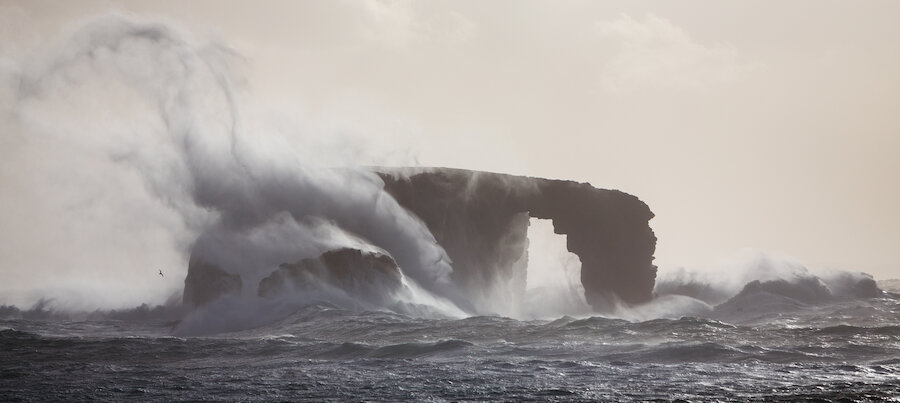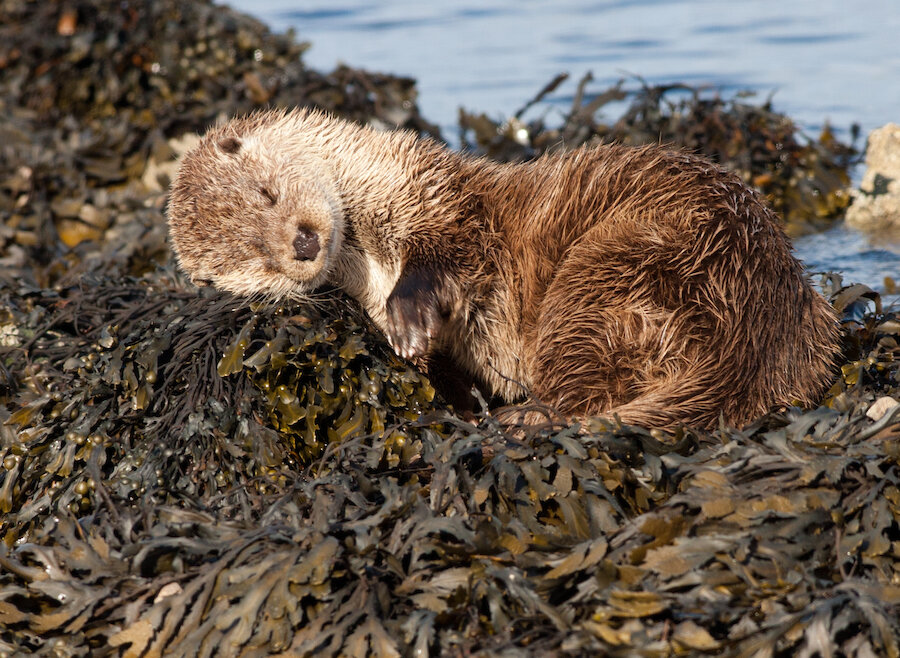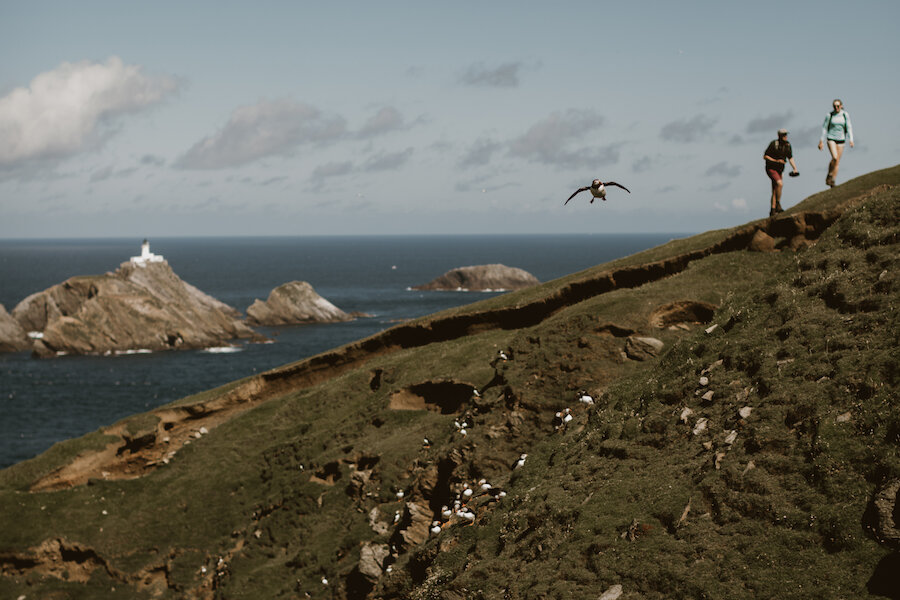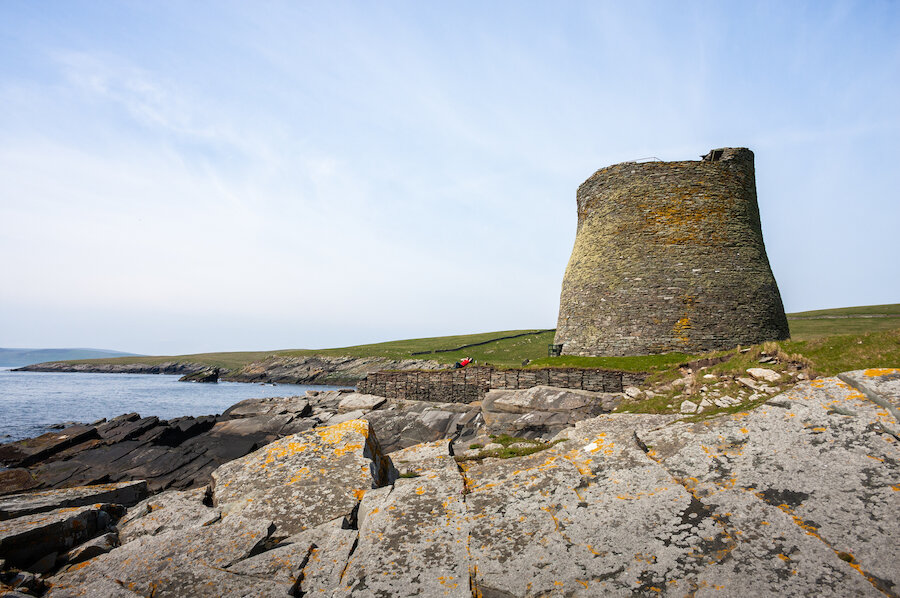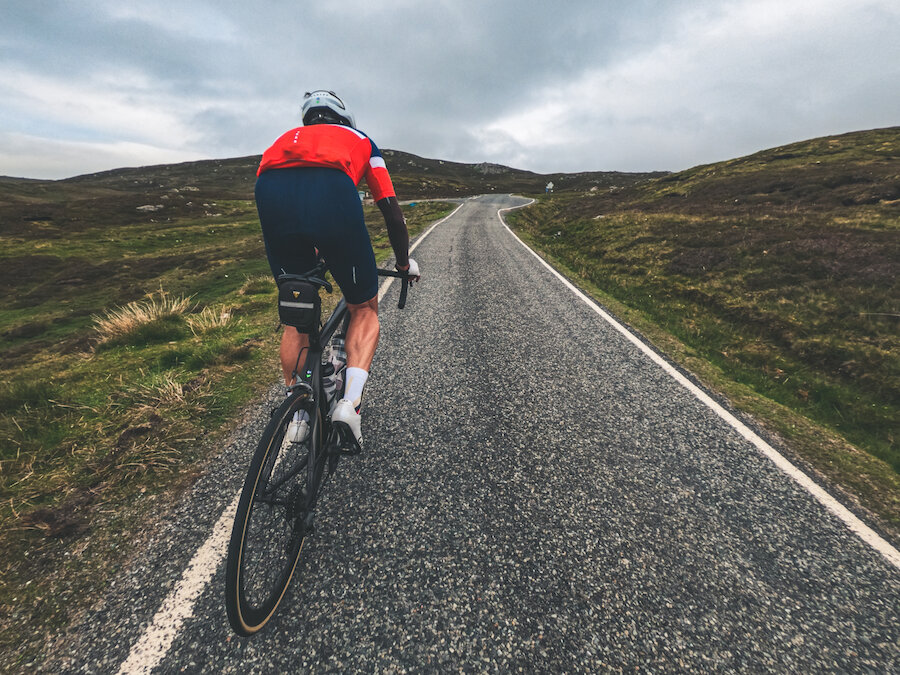1. Catch a really big swell at Eshaness
Eshaness, the beautiful peninsula on the northwest of the Shetland Mainland, is worth a visit any time – a place of stacks, blowholes, waterfalls and wild geological drama on walks across its cliffs and bays. But this corner of Shetland is particularly epic during a storm, when huge swells crash against otherworldly stacks like Dore Holm, which looks like a horse supping water, and roll in towards the steep cliffs, throwing spray as high as the lighthouse on the cliff edge.
